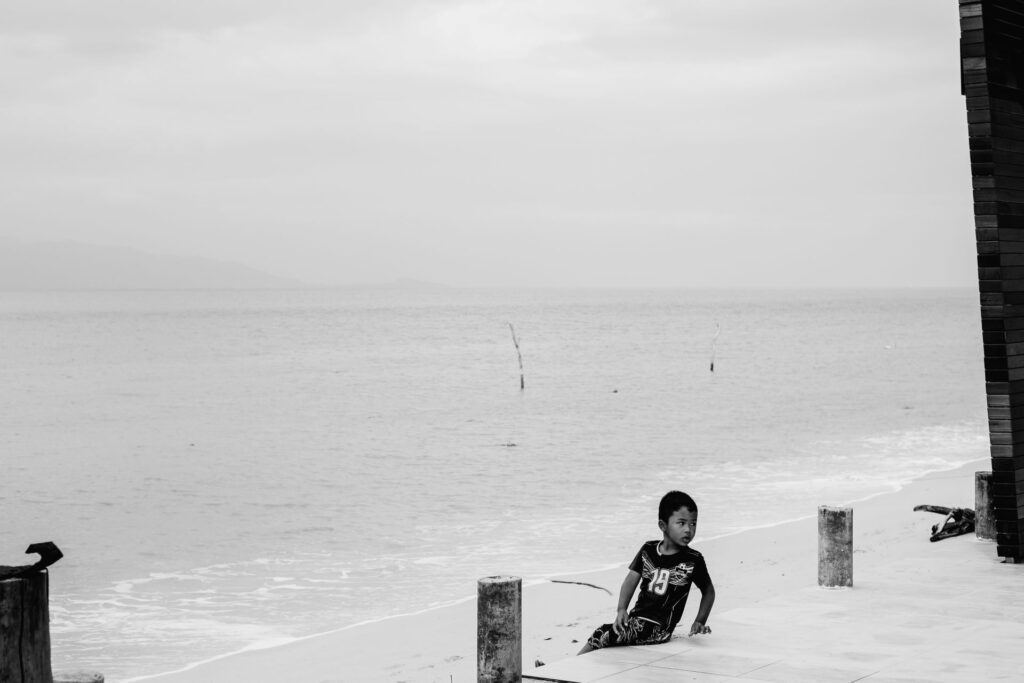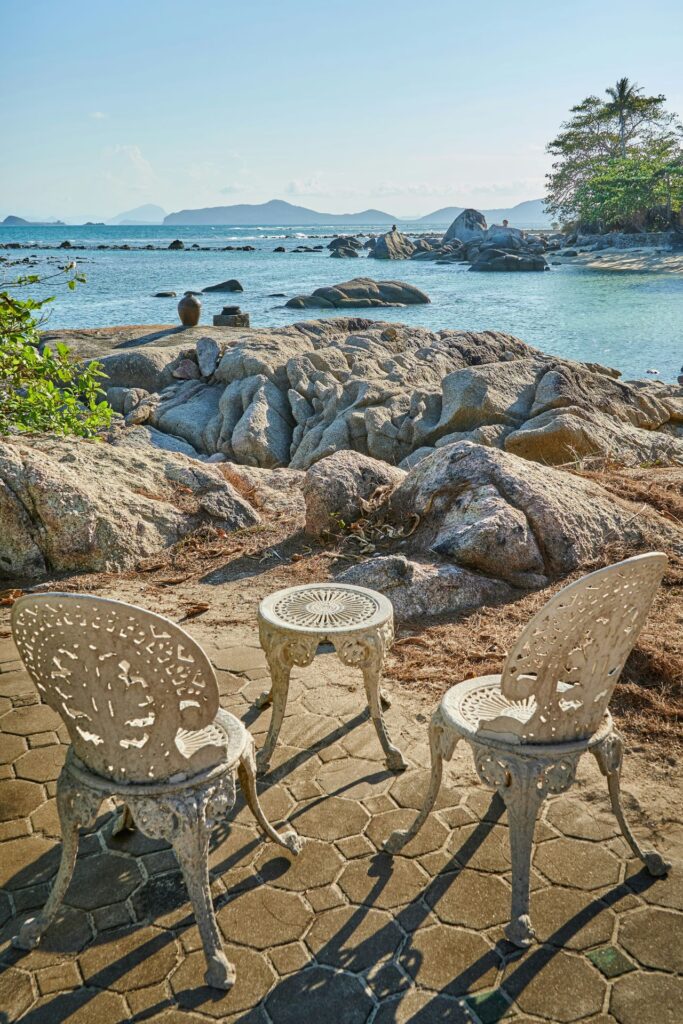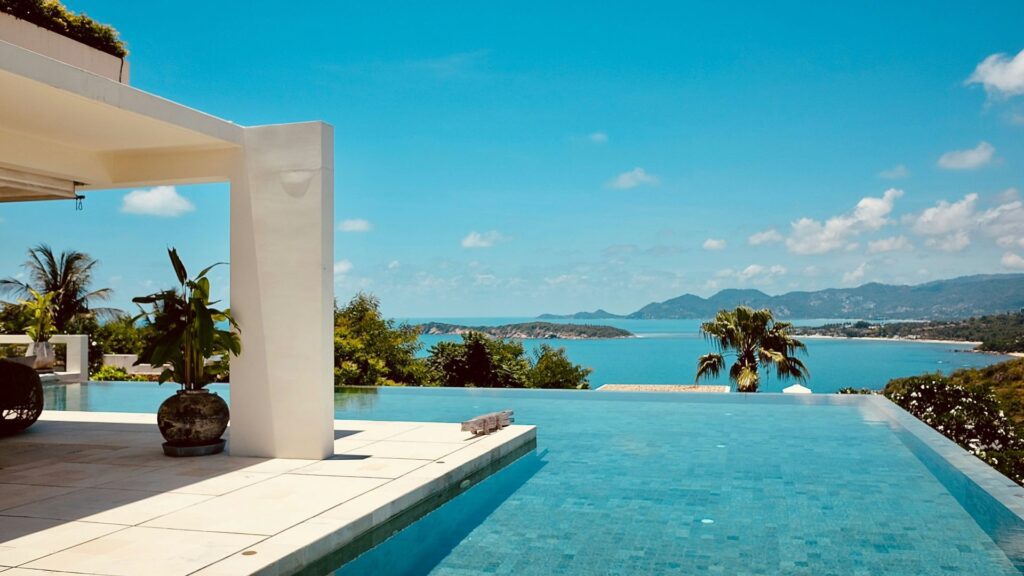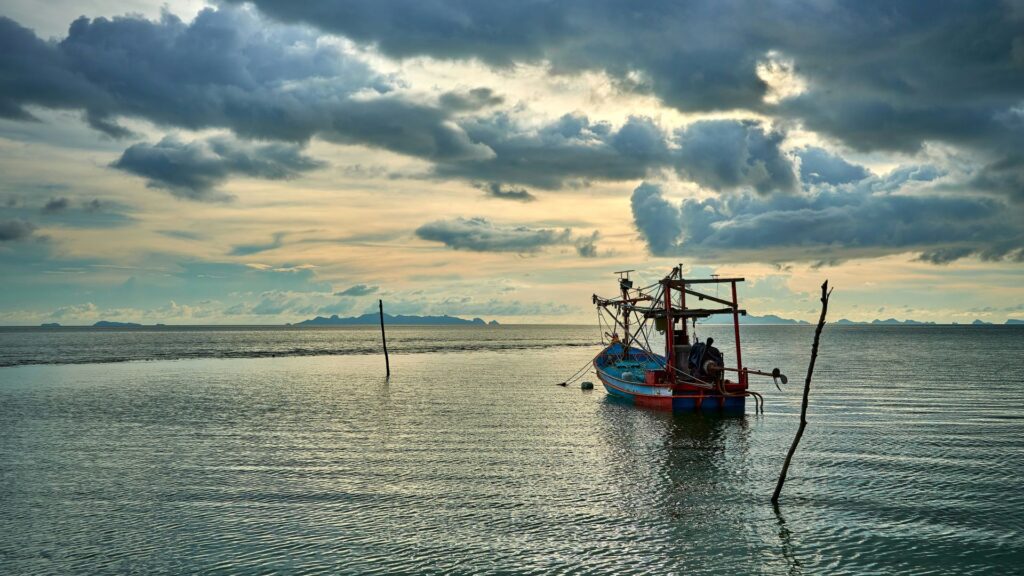Koh Samui, a tropical paradise renowned for its stunning beaches and thriving tourism industry, has evolved into a coveted location for property investment and development. As more investors and developers set their sights on this idyllic island, its natural beauty has come under increasing pressure. To safeguard its environment and ensure sustainable growth, Koh Samui has implemented a series of strict local regulations that govern construction.
For anyone planning a construction project on the island, understanding and adhering to these rules is not just important—it’s essential. These local regulations, which range from zoning laws to environmental protection policies, are designed to protect the island’s fragile ecosystems while allowing for responsible development. Navigating these regulations can be complex, but doing so is key to avoiding costly delays, potential fines, or even legal disputes.
In this guide, we will explore the most important local regulations affecting construction projects in Koh Samui and offer practical advice on how to ensure your project complies with them, paving the way for a successful build.
Understanding Zoning Laws in Koh Samui
One of the most critical aspects of construction in Koh Samui is adhering to the island’s zoning laws. These laws play a pivotal role in maintaining a balance between the island’s development and the protection of its natural environment. They govern what types of structures can be built, where they can be located, and the overall density of development in specific areas. For developers and homeowners alike, understanding these zoning laws is crucial for avoiding costly delays, penalties, or legal disputes.
Koh Samui is divided into several distinct zones, each with its own set of restrictions and requirements that ensure sustainable growth while preserving the island’s fragile ecosystems.
Residential, Commercial, and Green Zones
Zoning laws in Koh Samui are generally categorized into three main types: residential, commercial, and green zones. Each of these zones has strict guidelines on the type of construction permitted and the activities that can take place there.
• Residential zones are designated for housing developments and private residences. These areas are intended to maintain the community atmosphere and limit disruptive activities. When building in residential zones, restrictions often include specific rules about the types of housing structures allowed, ensuring they blend harmoniously with the surrounding environment.
• Commercial zones, on the other hand, are reserved for business-related construction, such as hotels, resorts, and shops. These areas are typically located near popular tourist hubs like Chaweng or Lamai, where tourism drives the local economy. In these zones, regulations are more lenient regarding the types of buildings allowed, but there are still rules governing height, density, and environmental impact.
• Green zones are arguably the most significant in terms of protecting Koh Samui’s natural beauty. These zones are protected areas, often comprising forests, beaches, or other ecologically sensitive regions. In most cases, construction is either heavily restricted or entirely prohibited. If development is allowed, it often requires special environmental impact assessments (EIA) and permits to ensure that the natural environment remains unharmed. Building in or near green zones demands extreme caution and planning, as violations can result in steep fines and legal challenges.
Height and Density Restrictions
Another essential component of zoning laws in Koh Samui involves height and density restrictions, particularly in coastal and environmentally sensitive areas. These restrictions are enforced to preserve the island’s natural skyline and minimize visual disruption to its scenic views, which are a major draw for both tourists and residents.
• Height restrictions are especially strict near beachfronts and popular tourist spots. In many coastal zones, buildings are limited to 12 meters or less, which is roughly equivalent to three stories. These restrictions help maintain the natural charm of the island by preventing the construction of high-rise buildings that could overshadow the landscape and block sea views.
• Density restrictions govern how much of a plot of land can be developed. These laws are crucial in preventing overdevelopment and ensuring that the island’s infrastructure can handle population growth. In some areas, only a percentage of the total land area can be built upon, while the rest must be preserved for greenery or open space. This regulation is particularly important in hillside areas where overdevelopment could lead to issues such as soil erosion or landslides.
For developers and property owners, understanding and adhering to these height and density regulations is not only essential for maintaining the integrity of the project but also for preserving the environmental health of the island. Violations of these regulations can lead to significant financial penalties or even the forced demolition of non-compliant structures, making it imperative to carefully plan and consult with local authorities before starting any construction.

Environmental Regulations and Impact Assessments
As one of Thailand’s most picturesque destinations, Koh Samui’s natural environment is a valuable asset that requires protection. The island’s increasing development has made environmental regulations a crucial aspect of any construction project. These regulations ensure that developers follow specific guidelines to safeguard the island’s natural beauty and ecosystems while promoting sustainable growth. Ensuring compliance with these environmental policies is not just about following the law—it’s about contributing to the long-term preservation of Koh Samui’s unique landscape and resources.
Environmental Protection Policies
Koh Samui has implemented strict environmental protection policies to shield its beaches, forests, and marine life from the potentially harmful effects of construction and overdevelopment. These policies require developers to minimize their ecological footprint, ensuring that projects do not contribute to pollution, erosion, or the destruction of habitats.
One of the key requirements of these policies is the integration of sustainable building practices. For example, developers are often encouraged to use eco-friendly materials, such as sustainably sourced wood or recycled construction materials. Projects must also take steps to manage waste properly, ensuring that debris from construction is disposed of in a manner that does not harm the surrounding environment.
In specific zones, particularly those near protected coastal or forested areas, developers may need to adopt additional measures. These include rainwater harvesting systems, which help conserve water resources, and energy-efficient systems that reduce the overall environmental impact of the construction. Furthermore, waste disposal solutions such as composting or eco-friendly waste management systems may be mandated to prevent any pollutants from seeping into the local ecosystems.
By adhering to these environmental protection policies, developers not only comply with local regulations but also contribute to the long-term sustainability of Koh Samui. It’s a forward-thinking approach that not only protects the environment but also aligns with the expectations of eco-conscious buyers and investors looking for sustainable properties on the island.
Environmental Impact Assessments (EIA)
For larger construction projects, particularly those situated near sensitive ecosystems like forests or coastlines, an Environmental Impact Assessment (EIA) is often required. The EIA is a comprehensive study that evaluates the potential effects of a proposed development on the surrounding environment. It is designed to identify and mitigate any negative impacts, ensuring that construction does not irreversibly damage local ecosystems or degrade natural resources.
The EIA process involves several steps, beginning with a detailed examination of the project’s scope, location, and intended operations. Environmental experts conduct field surveys and assessments to evaluate potential risks, such as increased erosion, habitat loss, or pollution. If any adverse effects are identified, the EIA will recommend steps to minimize or mitigate these impacts, such as incorporating green building technologies, altering the design to preserve natural features, or adjusting construction schedules to avoid sensitive times like breeding seasons for local wildlife.
The approval of an EIA can be a lengthy process, often requiring several months of review by relevant local authorities and environmental bodies. Construction cannot begin until the EIA is fully approved, and failure to conduct an EIA when required can result in significant penalties, including fines, project delays, or even the suspension of the development.
For developers, it is essential to consult with environmental experts and local regulatory authorities early in the planning stages to determine if an EIA is required. This proactive approach can help avoid delays later in the project and ensure that all environmental considerations are addressed before breaking ground. By completing the EIA process, developers demonstrate a commitment to environmental stewardship and responsible development in one of Thailand’s most cherished natural landscapes.
Navigating the Permit Process
One of the most critical steps in ensuring your construction project complies with local regulations in Koh Samui is obtaining the necessary permits. Without the proper documentation, your project could face severe consequences, including delays, hefty fines, or even legal action. Whether you’re building a residential villa or a commercial structure, following the correct permit procedures is essential for smooth project execution.
Navigating the permit process can seem overwhelming, but understanding the steps involved—and working with the right local experts—can make a significant difference in ensuring your project stays on track.
Building Permits and Application Process
Before you can begin any construction on the island, you must first obtain a building permit. This permit confirms that your project adheres to local building codes and zoning regulations. The application process is often complex and time-consuming, as it requires detailed architectural plans, site evaluations, and proof of compliance with environmental and safety standards.
The permit application process typically involves submitting your project plans to local authorities, who will review them for compliance. This review includes an evaluation of whether the project meets height restrictions, density requirements, and safety standards based on local zoning laws. It also ensures that your project does not infringe on environmentally sensitive areas.
Working closely with a local contractor or legal advisor who is well-versed in Koh Samui’s regulations can significantly streamline this process. These professionals understand what documentation is required and can guide you through submitting the correct information. Local experts can also help anticipate potential challenges and ensure that your plans meet the necessary criteria to minimize delays. Depending on the complexity of your project and the area in which it’s located, the permit approval process can take anywhere from several weeks to a few months, so planning ahead is crucial.
Special Permits for Coastal and Hillside Areas
If your project is located in a coastal or hillside area, you may need to obtain additional special permits. These regions are often subject to stricter regulations due to their environmental sensitivity and higher risk of natural hazards, such as erosion, flooding, or landslides.
For projects near the coastline, you may be required to secure permits that guarantee the protection of nearby marine ecosystems. Coastal areas are critical to the island’s ecology, and construction activities here can impact water quality, marine life, and the surrounding landscape. These permits often mandate environmentally-friendly construction techniques and require developers to implement protective measures that minimize damage to the coastal environment.
Similarly, for hillside projects, additional permits are necessary to ensure that development does not destabilize the land. Hillside construction often requires approvals that account for soil erosion prevention and flood control measures. You may be required to demonstrate how your project will integrate drainage systems or retaining walls to prevent landslides and protect both your property and neighboring land from potential damage.
Failing to obtain the necessary special permits for these sensitive areas can result in serious penalties, such as project shutdowns or fines, and may even force you to rework your design at a significant cost. It is essential to confirm with local building authorities whether your project requires these additional permits based on its location. Working with a legal advisor who understands Koh Samui’s specific regulations for coastal and hillside developments will help ensure that your project is compliant and avoid any future complications with local authorities.

Adhering to Safety Standards
Beyond environmental and zoning regulations, all construction projects in Koh Samui must adhere to local safety standards. These standards are designed to ensure the safety of not only the construction workers but also future occupants of the building and the surrounding community. By complying with these safety regulations from the outset, you can avoid costly setbacks and ensure that your project is legally sound and safe for long-term use.
Structural and Fire Safety Codes
Structural safety codes are a critical component of building in Koh Samui, as they govern the overall integrity of the structure. Given the island’s tropical climate, buildings must be designed and constructed to withstand local conditions, including tropical storms, high levels of humidity, and the risk of flooding. These codes specify everything from the type of materials to be used to specific architectural designs that can endure harsh weather conditions without compromising the safety of the building.
In addition to structural integrity, fire safety codes play a vital role, especially in commercial buildings and hotels where large numbers of people may be present at any given time. Fire safety standards mandate the inclusion of essential fire protection measures, such as properly placed fire exits, sprinkler systems, and the use of fire-resistant materials in key areas of the building. These systems must be installed and maintained to ensure rapid response in case of an emergency, reducing the risk of injury or damage.
Ensuring that your construction project complies with structural and fire safety regulations from the beginning can help prevent future issues such as rework, delays, or fines. Working with qualified professionals—including architects and contractors familiar with Thai safety standards—will ensure your project meets all necessary requirements and can pass inspections without any difficulties.
Worker Safety and Labor Laws
In addition to protecting the occupants and the structural integrity of the building, construction sites in Koh Samui must also comply with worker safety regulations. These laws ensure that construction workers are provided with a safe working environment that adheres to local labor and safety laws. This includes providing adequate personal protective equipment (PPE), maintaining safe working conditions, and following established procedures to prevent accidents.
Key safety measures include creating safe pathways on site, properly storing hazardous materials, and ensuring that all workers are trained to operate machinery safely. Additionally, Koh Samui’s labor laws regulate working hours, wages, and compensation, ensuring fair treatment of workers and reducing the risk of labor disputes that could lead to delays or legal challenges.
Non-compliance with worker safety regulations can lead to fines, project shutdowns, and even criminal charges. By partnering with a local construction company that understands and complies with these safety standards, you can help create a safer and more productive working environment for everyone involved in the project. Furthermore, maintaining a safe site not only protects workers but also reduces the risk of costly accidents that could derail your project.
Heveatecture: Your Trusted Partner for Navigating Koh Samui’s Construction Regulations
When embarking on a construction project in Koh Samui, partnering with a company that truly understands the local landscape and the complexity of the island’s regulations can make all the difference. This is where Heveatecture stands out. As a local leader in sustainable and innovative construction, Heveatecture not only brings deep expertise in architectural design but also a solid understanding of the zoning laws, environmental regulations, and safety standards that govern construction on the island.
Local Expertise with Regulations and Permits
Navigating the various local regulations can be a daunting process for property owners and developers. At Heveatecture, the team has years of experience working within Koh Samui’s regulatory framework. Whether it’s securing the right building permits, ensuring compliance with zoning restrictions, or obtaining environmental impact assessments (EIA) for larger projects, Heveatecture provides a seamless experience that helps projects avoid costly delays and potential legal challenges.
By leveraging their local knowledge and established relationships with regulatory authorities, Heveatecture ensures that all necessary permits are secured efficiently, keeping your project on schedule. Their experience in handling coastal and hillside construction permits, in particular, is invaluable for projects located in Koh Samui’s more sensitive areas.
Commitment to Environmental and Structural Integrity
Heveatecture is deeply committed to preserving Koh Samui’s unique natural environment while delivering high-quality construction projects. The company places a strong emphasis on sustainable building practices that not only meet but often exceed the island’s environmental protection policies. Whether integrating eco-friendly materials, implementing rainwater harvesting systems, or following strict guidelines to minimize the environmental impact of new developments, Heveatecture is dedicated to building responsibly.
In addition to their environmental commitment, Heveatecture ensures that all of their projects comply with the highest structural safety standards. Whether constructing a private villa or a larger commercial building, Heveatecture meticulously adheres to fire safety codes, structural integrity requirements, and local worker safety regulations. Their team of skilled professionals ensures that every detail is handled with care, from sourcing materials suited for Koh Samui’s tropical climate to ensuring that buildings are equipped to withstand tropical storms and flood risks.
By choosing Heveatecture as your partner, you are not only selecting a company with an unparalleled commitment to quality and sustainability, but one that has an intimate knowledge of the island’s regulatory landscape. This local expertise is crucial for ensuring your project is not only compliant but also tailored to thrive in Koh Samui’s unique environment.

Conclusion
Understanding and adhering to the local regulations that govern construction in Koh Samui is essential for ensuring that your project is completed on time, within budget, and without facing legal or environmental setbacks. From navigating zoning laws to following stringent environmental protection policies and ensuring compliance with safety standards, being fully informed about the rules that apply will make your construction process much smoother.
By working with local professionals who have in-depth knowledge of Koh Samui’s regulations, you can minimize the risk of complications, delays, or fines. From securing the necessary permits to ensuring compliance with structural, fire, and worker safety standards, following these guidelines will ensure that your construction project is not only successful but also sustainable and safe for years to come.

Frequently Asked Questions
Yes, all construction projects require a building permit that ensures compliance with local zoning laws and building codes.
Zoning laws in Koh Samui regulate what types of buildings can be constructed in specific areas, with separate regulations for residential, commercial, and green zones.
Yes, height restrictions often apply, particularly in coastal areas, where buildings are typically limited to 12 meters to preserve the natural landscape.
An EIA is a study that evaluates the potential environmental effects of a construction project, particularly in sensitive areas like forests or coastlines. It’s required for larger developments.
You’ll need to submit architectural plans and other documentation to local authorities to secure a building permit. Working with a local contractor can help expedite the process.
Developers must follow local environmental protection policies that safeguard the island’s natural resources, including measures to reduce pollution and habitat destruction.
Construction in green zones is either highly restricted or prohibited to protect the natural environment. Special permits may be required in certain cases.
Yes, hillside construction often requires special permits due to the environmental sensitivity and risks of erosion or landslides. You’ll need to demonstrate that your project includes measures to prevent these hazards.
Your project must adhere to structural safety codes to withstand local weather conditions, as well as fire safety regulations that mandate fire exits and fire-resistant materials in certain buildings.
For smaller projects like a villa, an EIA is generally not required unless the location is environmentally sensitive, such as near a protected coastline or forest. However, it’s important to consult with local authorities to verify this.
